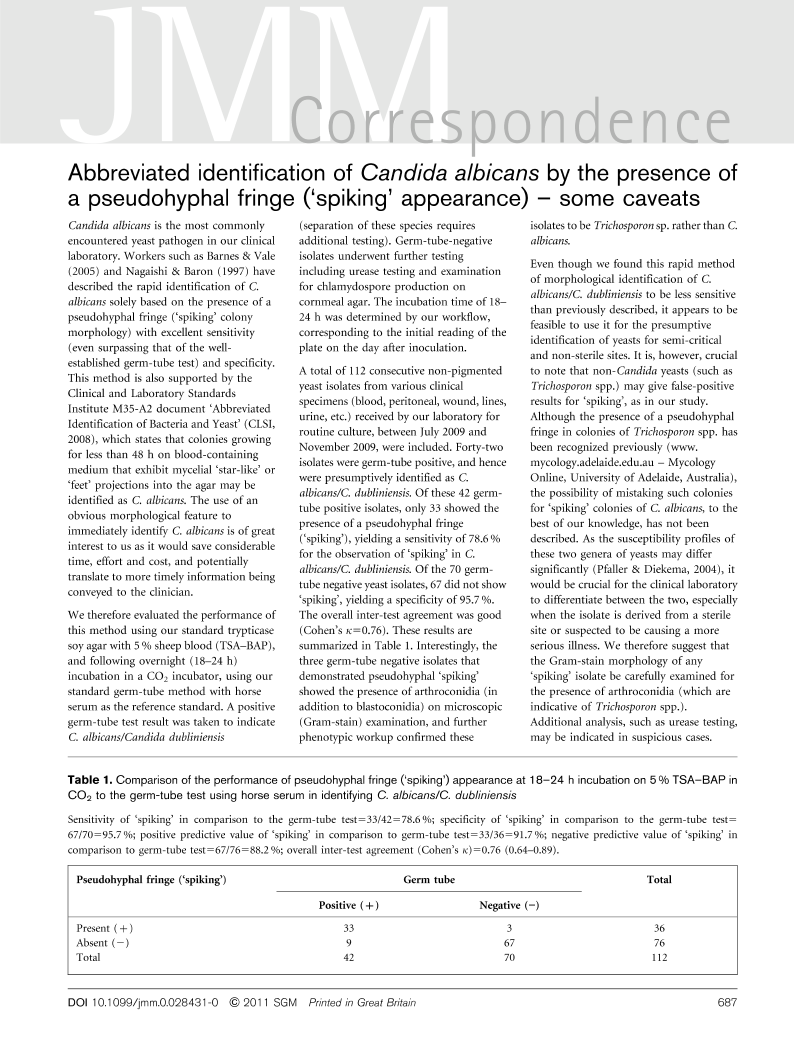
Full text loading...

Abbreviated identification of Candida albicans by the presence of a pseudohyphal fringe (‘spiking’ appearance) – some caveats, Page 1 of 1
< Previous page | Next page > /docserver/preview/fulltext/jmm/60/5/687_jmm028431-1.gif
There is no abstract available.

Article metrics loading...

Full text loading...
References


Data & Media loading...
